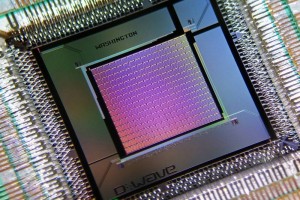In one type of quantum computer, trapped ions store quantum information, or qubits. Making calculations means bringing these ions together, which in a big machine becomes inefficient. To get around that, David Kielpinski at Griffith University in Nathan, Queensland, Australia, and colleagues have proposed a scheme that incorporates ions with another approach to quantum computing, superconducting circuits. Each ion is held inside a capacitor, so it forms part of a circuit.
The circuit can sense the ion’s quantum state, but only faintly because their natural frequencies are very different. So the team added another capacitor to their design, and made it vibrate using sound waves at a frequency of 1 gigahertz.
This tunes the circuit so it responds to the ion’s vibrations, allowing the ion’s quantum state to be transferred rapidly to the circuit.
A chip that combines ions and circuits in this way might be able to manipulate many qubits, eventually cracking cryptographic codes and enabling us to simulate peculiar quantum theories of the universe.
The device may be difficult to actually construct, says Kielpinski. “But now that the basic idea is out there, I imagine the community will find ways to simplify it.”
 Electronics Weekly Electronics Design & Components Tech News
Electronics Weekly Electronics Design & Components Tech News



